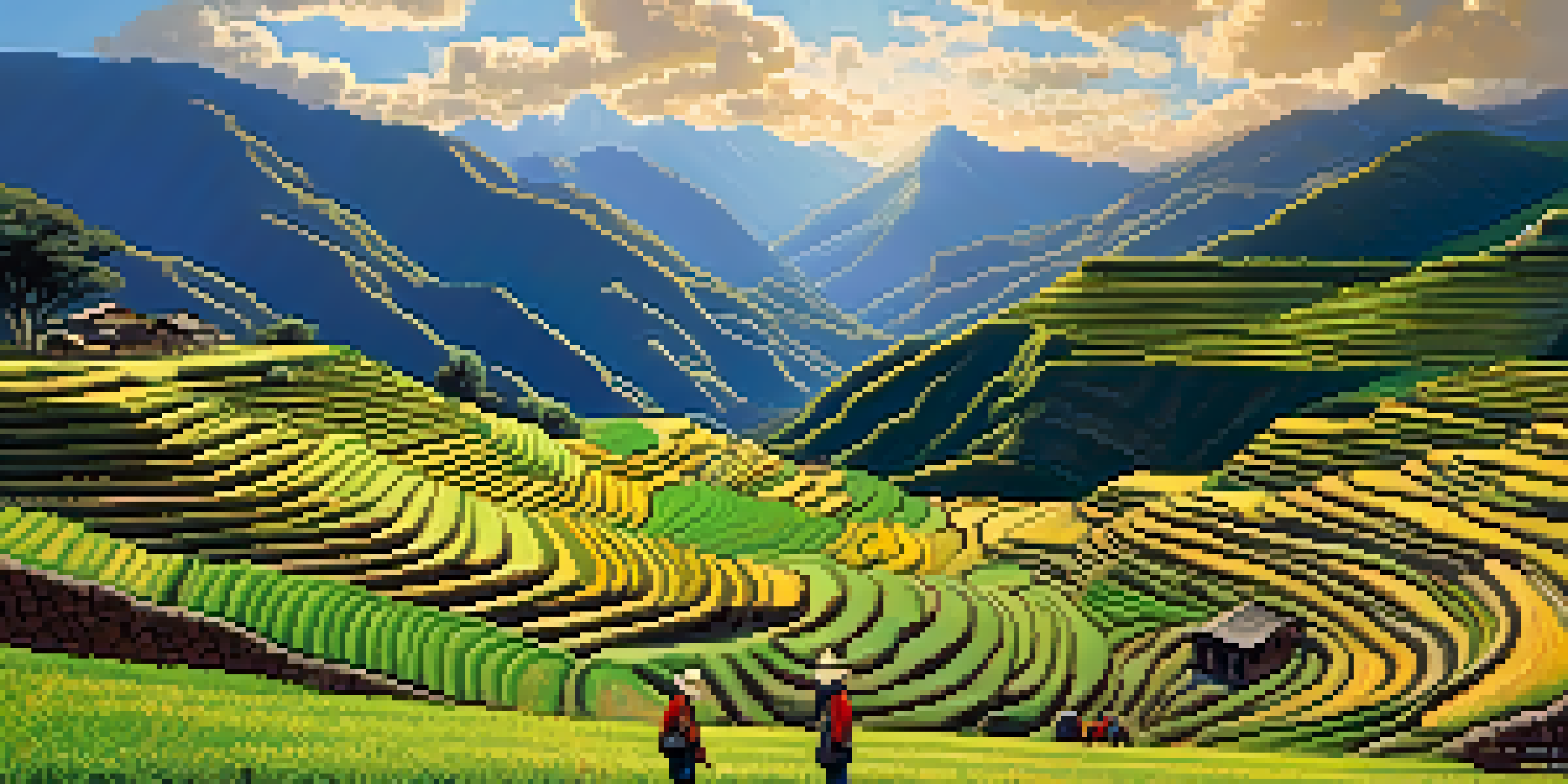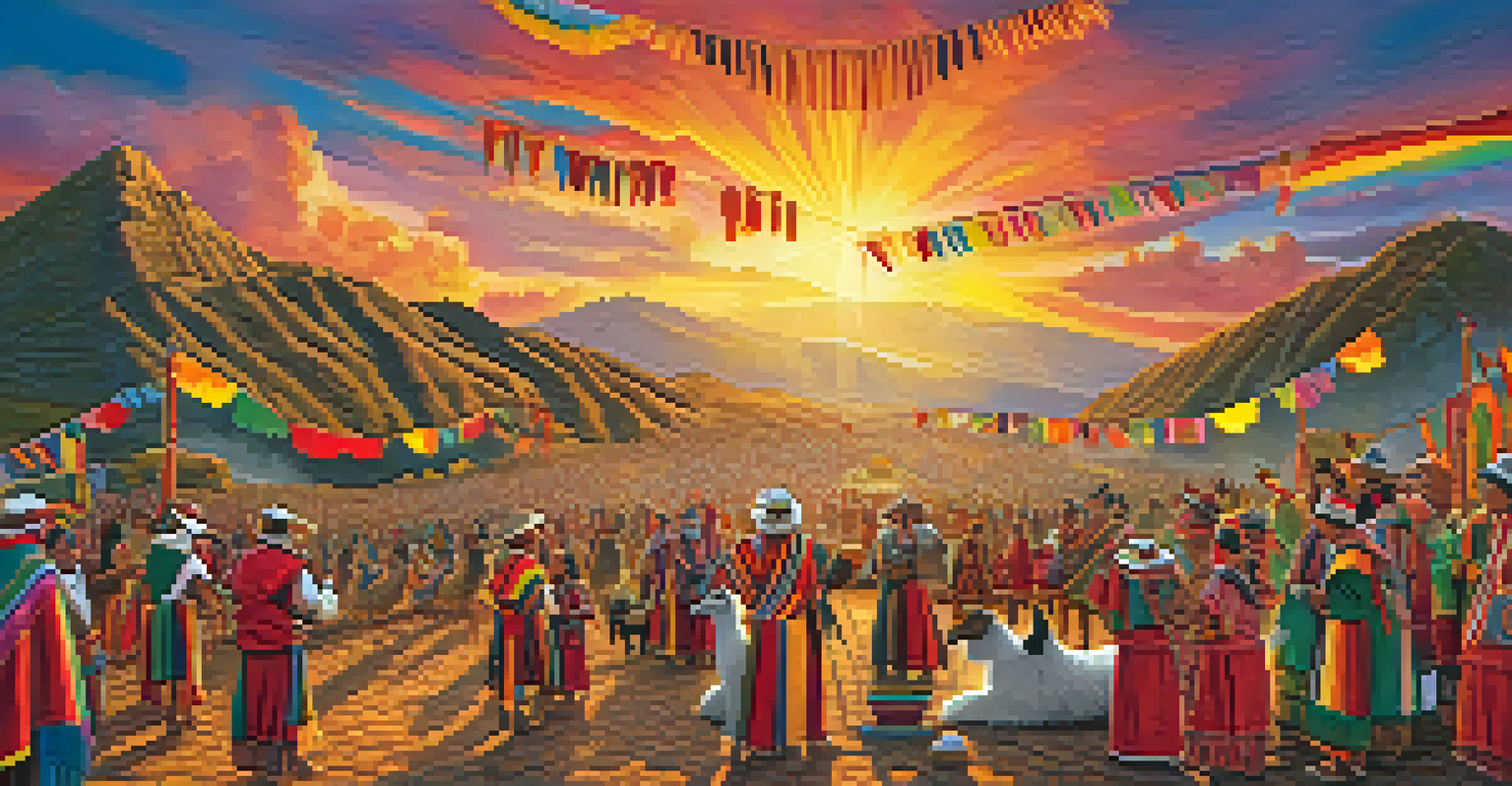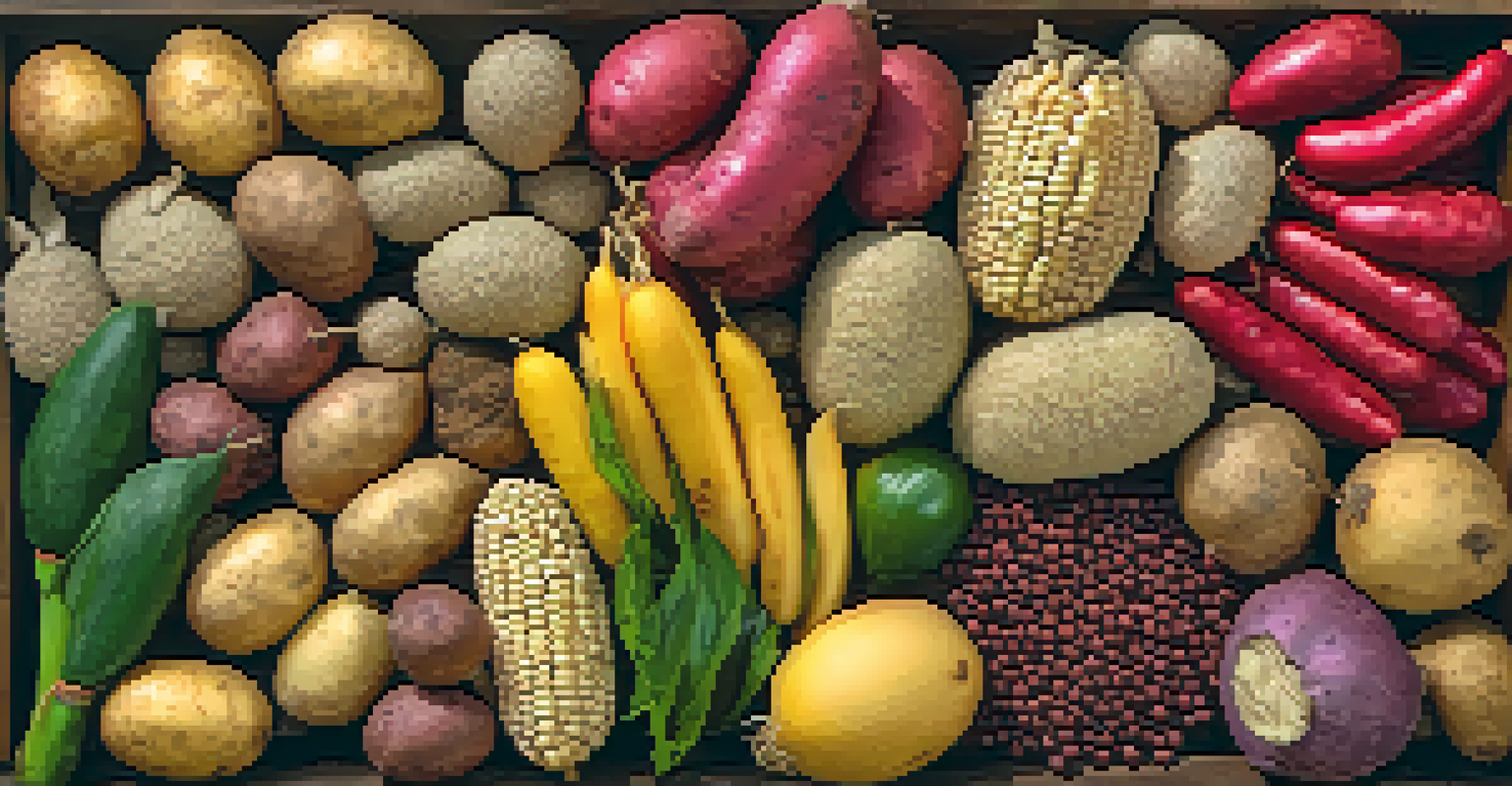The Role of Agriculture in Inca Civilization and Cultural Identity

The Foundation of Inca Society: Agriculture's Importance
Agriculture was the backbone of the Inca civilization, vital for sustenance and economic stability. The Incas developed advanced farming techniques, such as terracing, to maximize land use in the rugged Andean mountains. These techniques allowed them to cultivate diverse crops, including potatoes, maize, and quinoa, which were staples in their diet.
Agriculture is the foundation of civilization and any stable economy.
The agricultural surplus not only supported the growing population but also facilitated trade between different regions of the empire. This trade helped to unify the diverse groups within the Inca Empire, strengthening their cultural identity. Festivals and rituals often centered around agricultural cycles, reflecting the deep connection between farming and Inca spirituality.
In essence, agriculture fostered a sense of community among the Incas, as families worked together to plant and harvest crops. This collaboration reinforced social bonds and created a shared identity rooted in their agricultural practices.
The Role of Rituals and Festivals in Agricultural Life
Inca agricultural practices were intertwined with a rich tapestry of rituals and festivals that celebrated the land and its bounty. Key ceremonies, such as Inti Raymi, honored the sun god and marked the changing seasons, ensuring favorable weather for crops. These events not only reinforced the importance of agriculture but also served to unite communities in shared worship.

During these festivals, the Incas performed elaborate rituals, including offerings of llamas and other goods to appease the gods. Such acts were believed to guarantee a fruitful harvest and exemplified the Incas' deep reverence for nature. The connection between agriculture and spirituality was so profound that it influenced various aspects of their daily lives.
Agriculture Fueled Inca Society
Agriculture was the backbone of the Inca civilization, providing sustenance, economic stability, and a unifying cultural identity.
These rituals and festivals became a vital aspect of Inca cultural identity, showcasing their values and beliefs. By celebrating the agricultural cycle, the Incas reinforced their relationship with the land, which was central to their existence.
Innovations in Agriculture: Technology and Techniques
The Incas were pioneers in agricultural innovations, developing techniques that adapted to their unique environment. One notable method was the construction of terraces, which transformed steep mountainsides into arable land. This not only maximized space but also helped with water management, essential for crop growth in the high-altitude region.
The land is not just a source of food, but a sacred trust that connects us to our ancestors and our future.
Additionally, the use of irrigation systems allowed the Incas to direct water to their crops effectively. These systems were sophisticated for their time, demonstrating the Incas' engineering prowess and understanding of agriculture. By harnessing their environment, they ensured a steady food supply year-round.
These technological advancements in agriculture not only supported the empire's economy but also contributed to its cultural identity. The ability to produce diverse crops made the Inca culture rich and varied, highlighting their ingenuity and adaptability to challenges.
Crops: The Heart of Inca Agriculture and Diet
The diversity of crops cultivated by the Incas was a testament to their agricultural expertise. Potatoes, which originated in the Andean region, became a staple food, providing essential nutrients and energy. The Inca developed over 4,000 varieties of potatoes, showcasing their adaptability and knowledge of local conditions.
Maize was another crucial crop, used not only for food but also for making chicha, a traditional fermented beverage. This drink played a significant role in social and religious gatherings, reinforcing cultural practices. Additionally, quinoa, often referred to as the 'mother grain,' was valued for its protein content and was an integral part of the Inca diet.
Rituals Strengthened Community Bonds
Inca agricultural practices were deeply intertwined with rituals and festivals, fostering a strong sense of community and shared spirituality.
These crops were more than just sustenance; they represented the Inca’s agricultural achievements and their connection to the land. The cultivation and consumption of these foods became symbols of Inca identity, deeply rooted in their cultural heritage.
Agriculture and Economic Stability in the Inca Empire
Agriculture played a crucial role in the economic stability of the Inca Empire. The surplus food produced allowed for trade with neighboring regions, fostering economic interdependence. This trade not only enriched the empire but also facilitated cultural exchange, as different communities shared agricultural practices and goods.
The government, led by the Sapa Inca, implemented a system of redistribution, where excess crops were stored in state-run warehouses. During times of scarcity, these reserves could be distributed to those in need, ensuring that no one went hungry. This system reinforced loyalty to the state and demonstrated the importance of agriculture in maintaining social order.
Through these economic practices, agriculture became a cornerstone of Inca society, underpinning their political and social structures. The wealth generated from farming allowed the Incas to invest in infrastructure, further solidifying their empire's stability and unity.
Agricultural Practices and Social Hierarchy in Inca Society
Inca society was highly structured, and agricultural practices reflected this social hierarchy. The Sapa Inca and the nobility owned vast tracts of land, often worked by commoners. This system established a clear division between social classes, with the elite benefiting from the agricultural output of the lower classes.
While commoners worked the fields, they were also required to pay taxes in the form of labor, known as 'mita.' This system ensured that agricultural production was maintained but also reinforced the power dynamics within the society. The nobility often used their wealth to sponsor religious ceremonies or public works, further emphasizing their status.
Innovations Shaped Agricultural Success
The Incas implemented advanced agricultural techniques, such as terracing and irrigation, which allowed them to thrive in the challenging Andean environment.
Despite this hierarchy, agriculture allowed for social mobility in some cases. Successful farmers could gain recognition and improve their standing within the community. Thus, while agriculture was a tool for maintaining social order, it also provided opportunities for individuals to rise within the Inca social structure.
The Legacy of Inca Agriculture in Modern Times
The agricultural practices of the Incas have left a lasting legacy that continues to influence modern agriculture in the Andes. Techniques such as terracing and crop rotation are still in use today, adapted to contemporary challenges. Farmers today often rely on traditional knowledge passed down through generations, highlighting the resilience of these methods.
Moreover, many of the crops first cultivated by the Incas, like potatoes and quinoa, have gained global recognition for their nutritional value. This resurgence has led to a renewed interest in Andean agriculture, promoting sustainable practices that honor the environment. In this way, the Inca approach to agriculture is being revitalized in an era of climate change and food insecurity.

Ultimately, the Inca civilization's agricultural innovations and cultural practices continue to resonate. By understanding their history, we can appreciate the importance of sustainable agriculture and its role in cultural identity, echoing the values the Incas held dear.